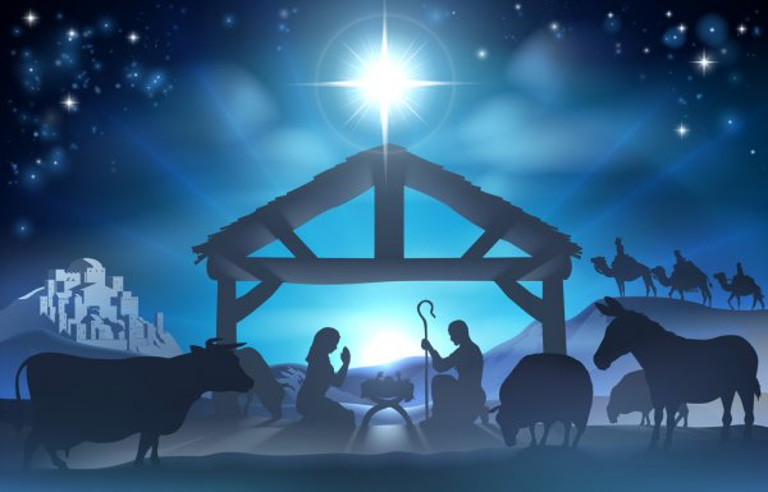Nativity Innkeeper: Fact, Fiction, or Misunderstood?
Was there truly an innkeeper in the Nativity? Journey into Scripture to uncover the deeper meaning and mystery behind this often misunderstood part of Christ’s birth.
5/1/202510 min read
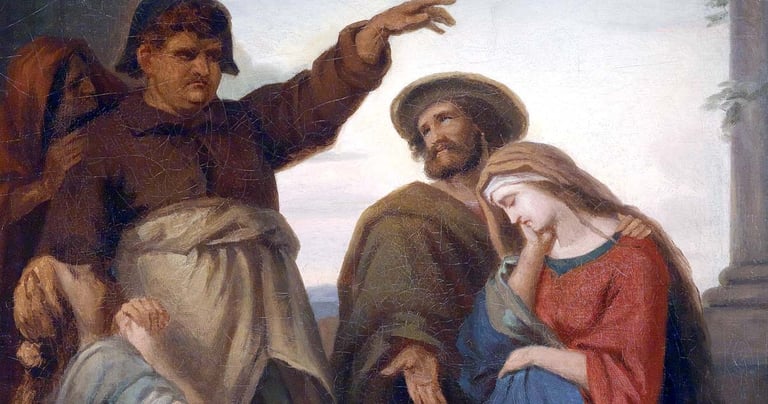

Introduction
Was there really a mean innkeeper in the Nativity story? Many Christmas plays feature one, but the Bible never mentions him by name—or even at all. So where did this character come from? In this post, we’ll explore what Scripture actually says, dig into historical context, and uncover how the innkeeper became a lasting part of the Christmas tradition.

What the Bible Actually Says About the Nativity
Let’s get back to the basics—what does the Bible actually say about the Nativity? If you’ve grown up seeing Christmas plays, nativity scenes, or watching holiday movies, you probably have a mental image of a desperate Mary and Joseph being turned away from a full inn by a grumpy innkeeper, ending up in a stable with cows and donkeys. But what if I told you… that’s not really what the Bible says?
Luke 2:7—The Key Verse
“And she gave birth to her firstborn, a son. She wrapped him in cloths and placed him in a manger, because there was no guest room available for them.” (Luke 2:7, NIV)
That’s it. That’s the verse most of our nativity stories hinge on. No grumpy innkeeper, no dramatic rejection scene. Just a simple statement that there was “no guest room available.”
The Word "Inn"—What Kataluma Really Means
The original Greek word used here is kataluma, and it doesn’t mean a commercial inn like a Holiday Inn of the ancient world. It’s actually the same word used in Luke 22:11 to describe the “upper room” where Jesus had the Last Supper. Most likely, kataluma referred to a guest room in a private home, not a roadside lodging. So Mary and Joseph weren’t turned away by a hotel—they probably just found that the guest space in the home they arrived at was already full, possibly due to the census-related travel chaos.
The Missing Innkeeper
Ever noticed that the Bible never mentions an innkeeper? There’s no character saying, “Sorry, no room at the inn!” That part of the story was likely added later as a way to explain why Jesus was placed in a manger. But the actual text doesn’t say who said there was no room—just that there was no room. So the idea of a mean innkeeper slamming the door? Pure creative license.
This more historically grounded reading actually paints a picture of Jesus being born not in some distant barn out back, but likely in the lower level of a house where animals were kept at night—common in first-century Judea. That means Jesus’s birth happened in a humble but family-oriented environment, not total isolation. And honestly, that makes the story even more beautiful to me. It’s not about rejection—it’s about God choosing to enter our world in the simplest, most relatable setting possible.
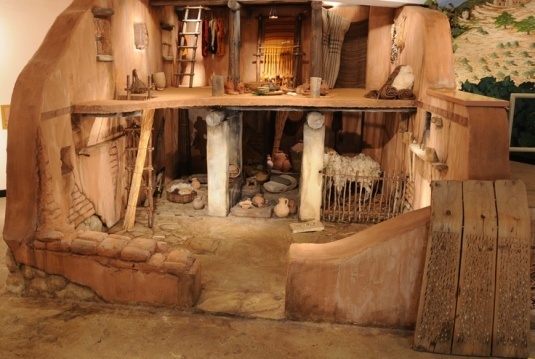

The Role of the "Inn" in the Nativity Story
When we hear the word “inn,” most of us think of a hotel or roadside lodging—a place where travelers pay to stay the night. So it’s easy to assume that Mary and Joseph were rejected from a local inn and forced to give birth in a stable behind it. But that image doesn’t really line up with the cultural or historical reality of first-century Bethlehem.
What Did “Inn” Really Mean in Ancient Bethlehem?
The word translated as “inn” in many English versions of Luke 2:7 is kataluma—a Greek term that’s better understood as “guest room.” It’s the same word used later in Luke 22:11 to describe the upper room where Jesus and his disciples shared the Last Supper. So, rather than a public inn or hotel, kataluma likely referred to a private room in someone’s home—probably an extended family member’s or a friend’s house.
There is a different Greek word, pandocheion, that does refer to a commercial inn—and interestingly, that’s the word Luke uses in the parable of the Good Samaritan (Luke 10:34). The fact that he didn’t use pandocheion in the nativity account is pretty telling.
Cultural Context: Private Homes Were the Norm
In that time and place, it was far more common for people to stay in private homes, especially in a small town like Bethlehem. Hospitality was deeply rooted in Jewish culture—offering shelter, food, and care to traveling family or even strangers was expected and honorable. Public inns existed, but they were few and far between, often expensive or even disreputable. It would have been natural for Joseph, returning to his ancestral town, to seek shelter with relatives.
Why a Manger or Stable Then?
If the guest room (kataluma) was already full—possibly with other extended family visiting for the census—Mary and Joseph might have stayed in the lower level of a house. Homes in that era often had a split-level layout, where animals were brought inside at night to the lower level, which also served as storage and workspace. That’s likely where the manger (a feeding trough) was located.
So rather than being shut out and left to give birth in a remote stable, Jesus was likely born in a modest, functional family home—but not in the guest room. That subtle shift in understanding gives us a much deeper, culturally accurate picture of the nativity. It’s not about rejection—it’s about God entering into the everyday life of a humble, hospitable household. And that feels even more meaningful to me.
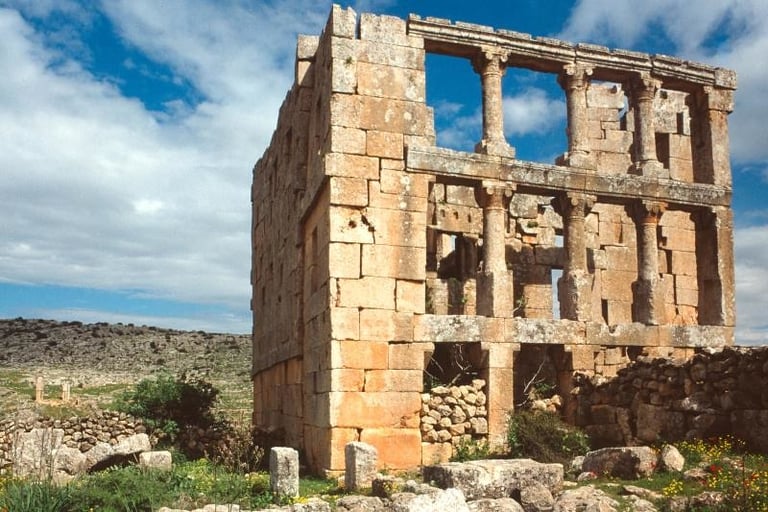

The Innkeeper: A Creation of Tradition and Art
You’ve probably seen him in every school nativity play—the grumpy innkeeper who slams the door on Mary and Joseph, sending them off to a stable. But here’s the thing: there is no innkeeper mentioned anywhere in the biblical nativity accounts. His presence is a classic example of how tradition, art, and storytelling can shape how we understand Scripture—even when that figure never actually existed in the text.
A Story Born from Imagination and Drama
The idea of an innkeeper likely emerged from a need to explain why Mary and Joseph ended up placing baby Jesus in a manger. Since Luke 2:7 says “there was no room for them in the kataluma,” readers assumed someone must have told them there was no space. Enter: the innkeeper. Over time, dramatists and storytellers added this figure to humanize the story and add tension and emotional weight. It’s a great narrative device—but it’s just that: a device, not a detail pulled from Scripture.
How Christian Art and Christmas Plays Cemented the Innkeeper
During the Middle Ages, nativity plays became wildly popular across Europe. They were meant to teach biblical stories to largely illiterate audiences, but to make them engaging, creators added dialogue, conflict, and additional characters—like the innkeeper. Art from this period also began to reflect these evolving stories, showing a man turning Mary and Joseph away at a door.
Later, in Victorian times, as Christmas became more sentimental and family-focused, the image of the forlorn couple being rejected by a grumpy innkeeper resonated deeply with people. The commercialization of Christmas in the 19th and 20th centuries then spread that version of the nativity across cards, books, and eventually TV and film, turning the innkeeper into a staple character.
Early Christian Writings and Artistic Depictions
Early Christian art—like 2nd to 4th-century frescoes, carvings, and mosaics—focused more on the figures of Mary, Jesus, the animals, and sometimes the magi or shepherds. There’s little to no visual evidence of an innkeeper until much later. Similarly, early Christian writings and sermons reflect theological themes over narrative dramatization; the idea of an innkeeper just wasn’t on their radar.
In short, the innkeeper is a character added by us, not Luke. He fills a gap in the story that we imagined needed explaining. But sometimes, the real story—the raw simplicity of a young couple finding shelter in an ordinary home where there was no guest room available—is powerful enough on its own.
And personally, I think that makes the nativity even more human and relatable.
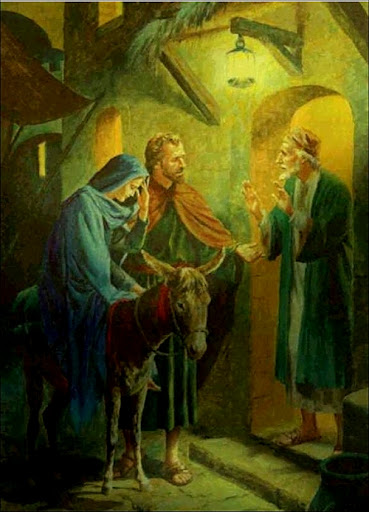

Alternative Interpretations—Was There Really an Innkeeper?
The mystery of the missing innkeeper in the nativity story has sparked a surprising amount of debate. While popular culture has cemented this character in our collective imagination, scholars and theologians have long questioned whether he ever existed—or if he was ever supposed to. So let’s explore a few alternative interpretations that help explain what’s actually going on in Luke’s account.
A Symbolic Absence: Was the “Innkeeper” Ever Meant to Be Literal?
Some theologians suggest that the “innkeeper,” though unnamed and technically absent from Scripture, functions as a symbol—a stand-in for the world’s lack of hospitality toward Christ. In this view, it’s not about one person turning away Mary and Joseph, but rather a reflection of a larger theme: that the Savior entered a world that had no place for Him.
It’s a powerful metaphor. The absence of room becomes a commentary on spiritual unpreparedness or societal neglect. This interpretation turns the innkeeper into an abstract concept—one that invites each of us to reflect on whether we would make space for Christ in our lives or leave Him at the margins.
Were They Actually Staying with Family?
Another explanation? There was no inn or innkeeper at all—because Mary and Joseph weren’t looking for one. The Greek word kataluma (often translated as "inn") is better understood as a guest room in a private home. Bethlehem was Joseph’s ancestral town, and it’s entirely plausible that they were staying with relatives—only the guest room was already occupied.
This interpretation makes cultural sense. In first-century Judea, hospitality was a deeply ingrained value. It would be unlikely for a pregnant woman to be left in the streets, especially among kin. Instead, Mary and Joseph might have stayed in the main living quarters of a home, where animals were often kept at night for warmth. Hence, the presence of a manger.
Why Did the Innkeeper Myth Take Hold?
So why has the image of the innkeeper stuck around for so long? Scholars point to a mix of storytelling needs, emotional resonance, and Western cultural framing. People naturally want to assign agency and dialogue to stories—especially during reenactments like Christmas plays. It's easier to portray a rejection by a person than to explain spatial limitations or social norms of ancient Judea.
Plus, there's dramatic appeal. A door slammed in the Holy Family’s face adds emotional punch. It creates tension, injustice, and eventually, a triumph of humility and divine intervention. Over time, that powerful imagery became the way the story was told—even if it strays from the biblical and historical record.
So was there really an innkeeper? Probably not. But that doesn’t make the story any less meaningful. In fact, recognizing the quiet realism of Luke’s account—no dramatic rejection, just an overcrowded home and humble accommodations—can actually deepen our appreciation of how God chose to enter the world: in the most ordinary of circumstances, among the overlooked and unnoticed.
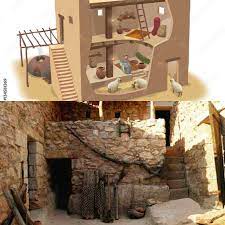

Theological Implications of the Innkeeper (Or Lack Thereof)
Sometimes what’s missing from a story speaks louder than what’s there—and the absence of an innkeeper in the Nativity narrative is one of those striking silences. It might seem like a minor detail, but when we dig into the deeper theological layers, that missing character opens the door to some profound truths about who Jesus is, how God works, and what that means for us today.
Humble Beginnings and Divine Humility
First and foremost, the lack of an innkeeper—and the fact that Jesus was born in a manger instead of a palace—reminds us that Jesus entered the world through humility, not status. The Messiah wasn’t born into comfort or wealth, but into the most modest and inconvenient of circumstances. The story resists any hint of glamor. There’s no welcome party, no midwife, no dignitary waiting. Just Mary, Joseph, and likely some animals.
This is deeply theological. It reflects God’s intentional descent into the lowliest places of human life. The absence of an innkeeper emphasizes that Jesus wasn’t rejected by one man—He was entering a world that, by and large, was unprepared for Him. He came not to be served, but to serve (Mark 10:45), and even His birthplace was a living metaphor for that mission.
Bethlehem: A Story of God’s Unexpected Plan
Bethlehem itself is significant—not just as a setting, but as a fulfillment of prophecy. According to Micah 5:2, the Messiah would come from Bethlehem, “though you are small among the clans of Judah.” The whole scenario—the overcrowding, the lack of guest space, the birth in a manger—paints a picture of a God who works through small towns and ordinary people to accomplish extraordinary purposes.
By removing an innkeeper from the scene, the story avoids centering blame on one person and instead draws our focus to a broader theme: God brings redemption through unglamorous places and unlikely circumstances. The story becomes less about who said “no room” and more about how God makes room in the least expected places.
Making Space for Christ—A Spiritual Wake-Up Call
The phrase “no room in the inn” becomes a kind of spiritual metaphor. It challenges us to ask: Is there room in our lives for Jesus? Or are we too full—too busy, too distracted, too self-sufficient—to welcome Him in?
The absence of an innkeeper leaves that question open-ended. Instead of pointing fingers, it invites us to look inward. Theologically, this ties into the idea that the Kingdom of God is something we must choose to make room for—not something that forces its way in. Christ knocks, but we have to open the door (Revelation 3:20).
Ultimately, the missing innkeeper isn’t a plot hole—it’s a feature. It invites us to reflect on the humility of God’s incarnation, the unexpected way His plans unfold, and the challenge to clear out space in our hearts for something holy. It’s a quiet, but powerful reminder that the real miracle of Christmas might just be how God uses the ordinary, the overlooked, and even the missing pieces to reveal something eternal.
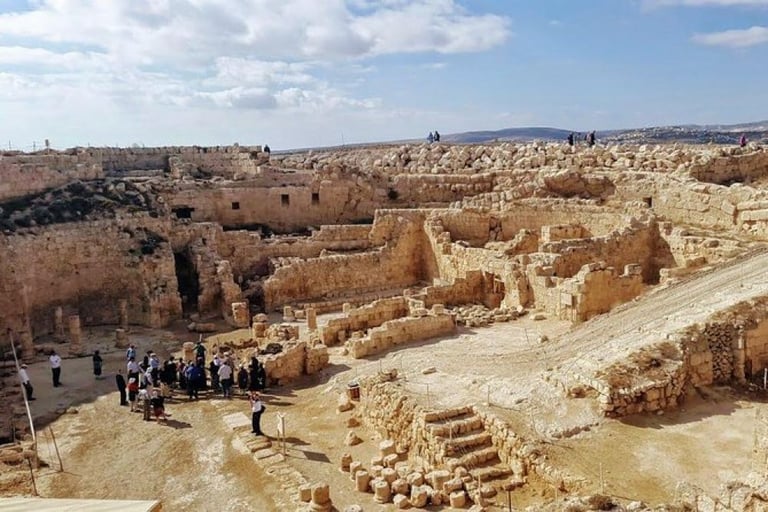

Conclusion
Whether or not the innkeeper existed is less important than the message behind the Nativity story. The birth of Jesus in a humble manger, away from the comforts of a proper inn, reminds us that God's plan often unfolds in the most unexpected ways. Reflecting on the innkeeper myth helps us focus on the deeper spiritual meanings of the Nativity—humility, acceptance, and divine providence.
